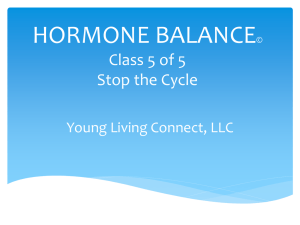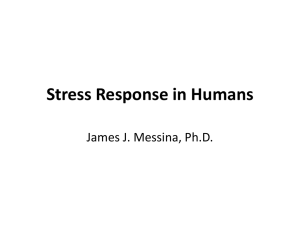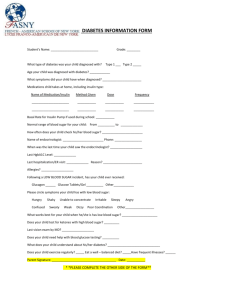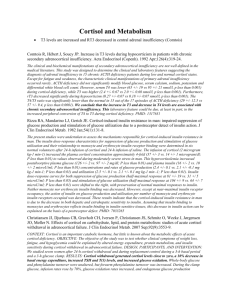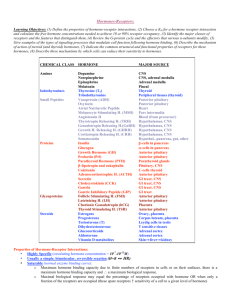pubdoc_12_8505_1060
advertisement
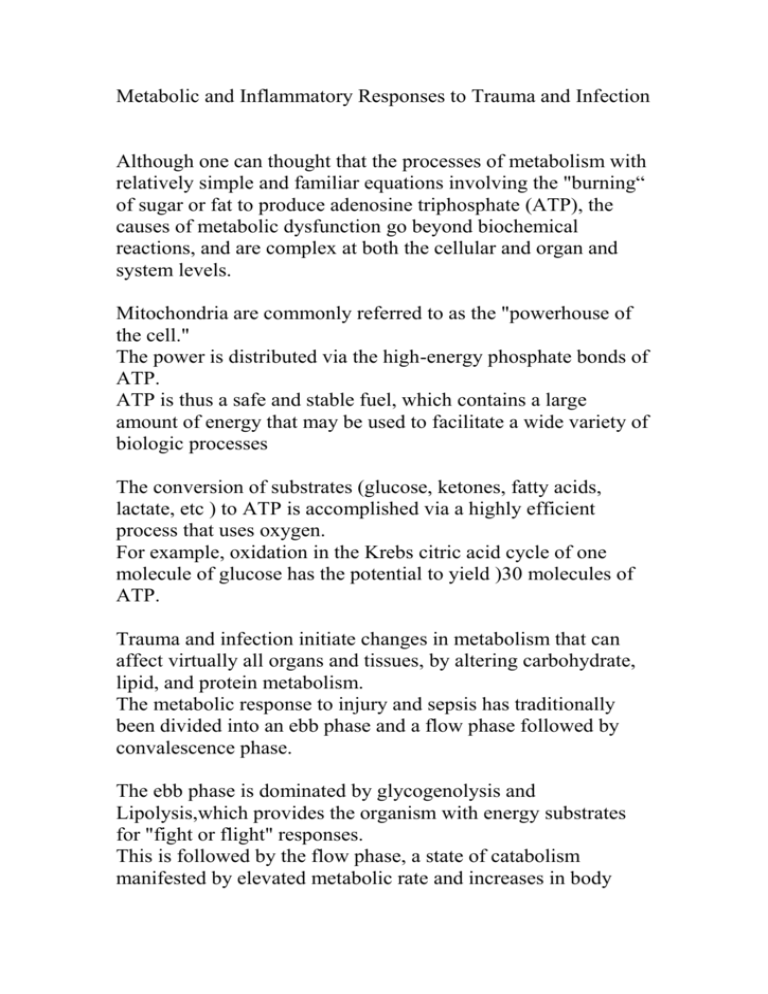
Metabolic and Inflammatory Responses to Trauma and Infection Although one can thought that the processes of metabolism with relatively simple and familiar equations involving the "burning“ of sugar or fat to produce adenosine triphosphate (ATP), the causes of metabolic dysfunction go beyond biochemical reactions, and are complex at both the cellular and organ and system levels. Mitochondria are commonly referred to as the "powerhouse of the cell." The power is distributed via the high-energy phosphate bonds of ATP. ATP is thus a safe and stable fuel, which contains a large amount of energy that may be used to facilitate a wide variety of biologic processes The conversion of substrates (glucose, ketones, fatty acids, lactate, etc ) to ATP is accomplished via a highly efficient process that uses oxygen. For example, oxidation in the Krebs citric acid cycle of one molecule of glucose has the potential to yield )30 molecules of ATP. Trauma and infection initiate changes in metabolism that can affect virtually all organs and tissues, by altering carbohydrate, lipid, and protein metabolism. The metabolic response to injury and sepsis has traditionally been divided into an ebb phase and a flow phase followed by convalescence phase. The ebb phase is dominated by glycogenolysis and Lipolysis,which provides the organism with energy substrates for "fight or flight" responses. This is followed by the flow phase, a state of catabolism manifested by elevated metabolic rate and increases in body temperature, pulse rate, urinary nitrogen excretion, and muscle catabolism. The subsequent anabolic "recovery“ phase can last from weeks to months. Response to Injury Endocrine and metabolic changes Initiation of response The hypothalamic–pituitary axis and the sympathetic nervous system are activated by afferent nerve input, both somatic and autonomic, from the area of trauma or injury. There is a failure of the normal feedback mechanisms of control of hormone secretion. For example, enhanced cortisol secretion fails to inhibit further production of adrenocorticotrophic hormone (ACTH). In general, there is release of catabolic hormones such as the catecholamines and pituitary hormones whereas anabolic hormones such as insulin and testosterone are suppressed Sympathetic nervous system Catecholamines are released from the adrenal medulla and norepinephrine spills over from presynaptic nerve terminals in response to hypothalamic stimulation. Marked activation of the sympathetic nervous system results in tachycardia and hypertension. Hepatic, pancreatic and renal function are also modified. Pituitary gland The anterior pituitary gland is controlled by hypothalamic releasing or inhibiting factors, which are secreted into the hypothalamic–hypophyseal portal system. The hypothalamus has direct neural control of the posterior pituitary gland. The secretion of the anterior pituitary hormones ACTH and growth hormone (GH) is stimulated by hypothalamic releasing factors, corticotrophin releasing factor (CRF) and somatotrophin (or growth hormone releasing factor). Cortisol The cortisol can increase within 4–6 h of major surgery or trauma. The usual negative feedback mechanism fails and concentrations of ACTH and cortisol remain persistently increased. The magnitude and duration of the increase correlate well with the severity of the insult and the response is not abolished by the administration of corticosteroids. The metabolic effects of cortisol are enhanced with skeletal muscle protein breakdown to provide gluconeogenic precursors and amino acids for protein synthesis in the liver, and stimulation of lipolysis. Glucose utilization is impaired, which is known as an ‘antiinsulin effect’ leading to further hyperglycemia. There are also mineralocorticoid effects with sodium and water retention and potassium loss. Cortisol also has well recognized anti-inflammatory effects mediated by a decrease in production of inflammatory mediators such as leukotrienes, cytokines and prostaglandins. Growth hormone Glycogenolysis and lipolysis are promoted by GH while glucose uptake and utilization by cells are inhibited. However, it may have a more important role in helping to prevent muscle protein breakdown and promote tissue repair. This action is achieved by the stimulation of the production of polypeptides in the liver, which are known as somatomedins or insulin-like growth factors (IGFs). Arginine vasopressin The increased production of this hormone from the posterior pituitary has an anti-diuretic effect. It is also an important vasopressor and enhances haemostasis. ACTH release is enhanced by AVP. Insulin and glucagon Insulin is a key anabolic hormone which is usually secreted in response to hyperglycaemia promoting glucose utilization and glycogen synthesis. Lipolysis is inhibited and muscle protein loss reduced. The failure of the body to secrete insulin in response to trauma is partly caused by the inhibition of the β-cells in the pancreas by the α2-adrenergic inhibitory effects of catecholamines. ‘Insulin resistance’ by target cells occurs later because of a defect in the insulin receptor/intracellular signalling pathway. In contrast to insulin, glucagon release promotes hepatic glycogenolysis and gluconeogenesis, but insulin effects predominate. Glucagon secretion increases briefly during surgery but it is not thought to make a major contribution to the hyperglycaemia. Other hormones Thyroxine (T4) and tri-iodothyronine (T3) are secreted by the thyroid, in response to TSH. Circulating concentrations are inversely correlated with sympathetic activity and after trauma there is a reduction in thyroid hormone production, which returns to normal over a few days. Testosterone concentrations are decreased for several days as are oestrogen values in females. Carbohydrate metabolism Hyperglycaemia is a major feature of the metabolic response to trauma and results from an increase in glucose production, at the same time as a reduction in glucose utilization. This is facilitated by catecholamines and cortisol, which promote glycogenolysis and gluconeogenesis. The usual mechanisms, which regulate glucose production and homeostasis, are ineffective because of initial failure of insulin secretion followed by insulin resistance. Protein metabolism Initially there is inhibition of protein anabolism, followed later, if the stress response is severe, by enhanced catabolism. Protein catabolism is stimulated by increased cortisol and cytokine concentrations. Skeletal muscle protein is mainly affected but some visceral muscle protein may also be catabolized to release essential amino acids. The amino acids released form new proteins in the liver known as acute phase proteins. Amino acids are also used for gluconeogenesis to maintain circulating blood glucose. The amount of protein loss can be assessed indirectly by measuring nitrogen excretion in the form of urea in the urine. The Plasma concentrations of certain other proteins produced in the liver, most notably albumin, are decreased in injury and sepsis. These proteins are referred to as "negative" acute-phase proteins, and the reduced synthesis of these proteins is consistent with reprioritization of liver protein synthesis in critical illness. The decreased circulating levels of albumin may also reflect increased albumin in the extravascular compartment, possibly associated with an increased rate of degradation. Catecholamines, glucagon, and glucocorticoids regulate acutephase protein synthesis and amino acid transport in the liver. Lipid metabolism Increased catecholamine, cortisol and glucagon secretion, in combination with insulin deficiency, promotes lipolysis and ketone body production. Triglycerides are metabolized to fatty acids and glycerol; the latter is a gluconeogenic substrate. High glucagon and low insulin concentrations also promote oxidation of FFAs to acyl CoA. Acyl CoA is converted in the liver to ketone bodies (βhydroxybutyrate, acetoacetate and acetone), which are a useful, water-soluble fuel source. Salt and water metabolism Arginine vasopressin secretion results in water retention, concentrated urine, and potassium loss and may continue for 3– 5 days after surgery. Renin is secreted from the juxtaglomerular cells of the kidney secondary to sympathetic efferent activation. It converts angiotensin I to angiotensin II, which in turn releases aldosterone from the adrenal cortex promoting sodium and water retention from the distal convoluted tubule. Cytokines Cytokines are low molecular weight, heterogeneous glycoproteins that include interleukins (IL) 1–17, interferons, and tumour necrosis factor. They are synthesized by activated macrophages, fibroblasts, endothelial and glial cells in response to tissue injury from surgery or trauma. Although they exert most of their effects locally (paracrine), they can also act systemically (endocrine). Cytokines play an important role in mediating immunity and inflammation by acting on surface receptors of target cells. The most important cytokine associated with trauma is IL-6 and peak circulating values are found 12–24 h after trauma. The size of IL-6 response reflects the degree of tissue damage which has occurred. IL-6, and other cytokines, cause the acute phase response ,which includes the production of acute phase proteins such as fibrinogen, C -reactive protein, complement proteins, α2macroglobulin, amyloid A and ceruloplasmin. Other effects of cytokines include fever, granulocytosis, haemostasis, tissue damage limitation and promotion of healing. Other endogenous substances Gender Differences in Injury Response Sex steroids, have been found to play a highly significant role in the response to injury, in addition to their role in modulating metabolism. Principal among these observations is that high estrogen levels have a protective effect against injuries, such as shock, trauma hemorrhage, and sepsis, and so far as protecting immune and cardiovascular depression. Further investigation confirmed these observations, and led to the finding that administration of exogenous estrogen (i.e., to males, or females with low/no estrogen) following trauma hemorrhage was capable of replicating the protective effect of high levels of endogenous hormone. For androgens, the converse appears to be true, in that blockade of androgen receptors with antagonists such as flutamide improves performance and outcomes for males.






